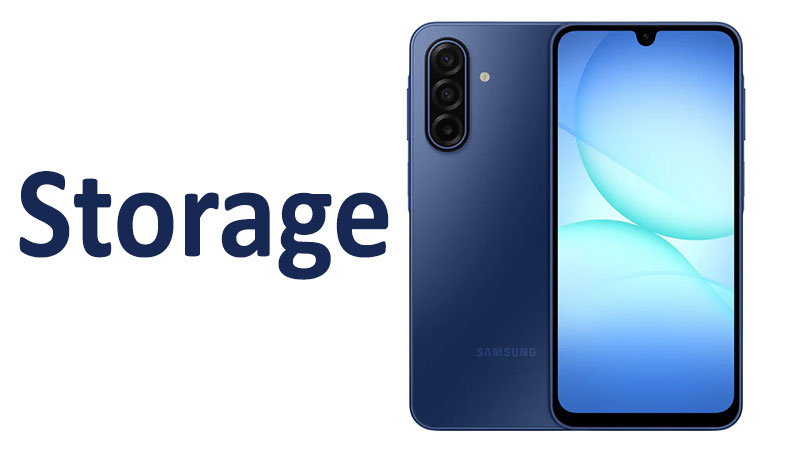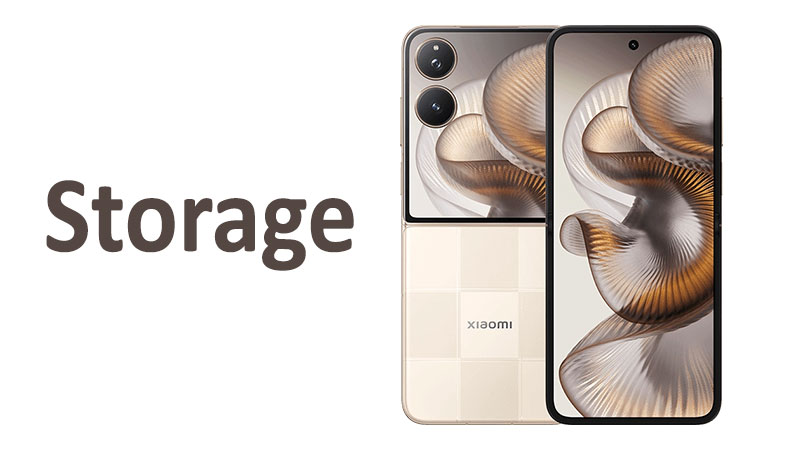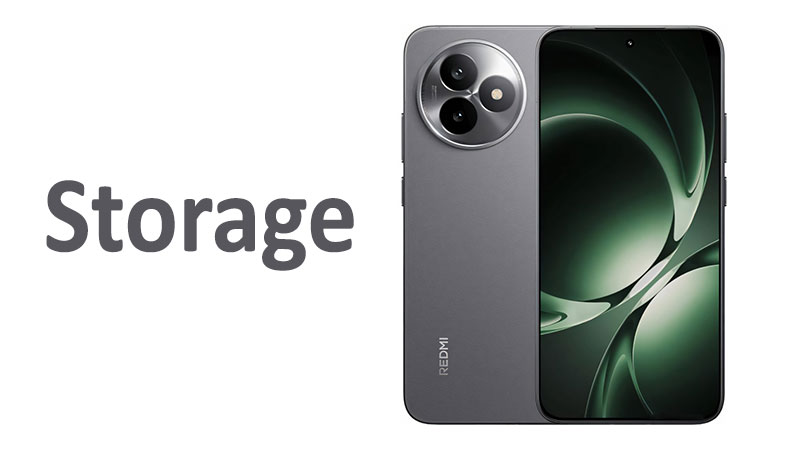The discussion around the Samsung Galaxy A17 Storage quickly becomes essential for any potential buyer. Understanding the internal memory capacity and the specific storage type is critical. This knowledge directly impacts the phone’s long-term performance and user experience. Consumers want a device that handles apps, photos, and files without slowing down. Therefore, evaluating the storage options is the most important step before making a purchase decision. This comprehensive guide will explore every facet of the A17’s storage configuration.
Understanding Samsung Galaxy A17 Storage Capacity
The Samsung Galaxy A17 is designed to appeal to a broad market segment. It targets users who need reliable performance without the flagship price tag. Samsung offers two primary internal storage options for the A17. These choices are the 128GB option and the larger 256GB variant. This dual-capacity strategy allows buyers to select a device that best fits their specific digital lifestyle.
The 128GB Internal Storage Option
The 128GB capacity remains the standard entry point for modern smartphones. This size is typically adequate for casual or moderate smartphone users. A user selecting this option mainly uses their phone for social media, streaming, and essential productivity apps. They might take a moderate number of photos and videos. They do not usually download a large library of high-definition movies or graphic-intensive games.
However, users must remember that the operating system consumes a portion of this space. The pre-installed apps also take up a significant chunk of the 128GB total. Therefore, the actual usable storage might be closer to 105GB to 110GB. While this is sufficient for many, it can quickly fill up. Users must regularly manage their files and backups. This choice balances affordability with functionality.
The 256GB Internal Storage Option
The 256GB storage variant caters to the power user or the “digital hoarder.” This capacity offers double the space of the base model. This option provides immense peace of mind for users who prioritize media consumption and gaming. People who shoot extensive 4K video or install large, demanding games will find this capacity necessary.
Choosing the 256GB model significantly reduces the need for frequent file management. It offers a buffer against running out of space unexpectedly. This larger internal memory also aids in future-proofing the device. As applications and operating system updates become larger, the extra space becomes increasingly valuable. Buyers should weigh the slightly higher cost against the long-term benefit of having more storage.
The Role of Expandable Storage
The Samsung Galaxy A-series is historically known for supporting expandable storage. The Galaxy A17 continues this vital tradition. It offers a dedicated slot for a microSD card. This feature allows users to increase the total storage capacity far beyond the internal limits.
MicroSD support is a massive advantage in the budget and mid-range segment. It provides a cost-effective way to add hundreds of gigabytes of external memory. Users can store photos, videos, and music on the microSD card. This action leaves the faster internal storage free for critical applications and system files. Samsung typically supports microSD cards up to 1TB. This capability effectively transforms the A17 into a massive media library. Buyers should always check the maximum supported microSD size before purchasing an expansion card.
Storage Technology: eMMC vs. UFS in the A17
Storage capacity tells only half the story of a phone’s performance. The type of internal memory chip used dictates the speed. This speed affects everything from app loading times to file transfer speeds. For the budget-friendly Galaxy A17, the storage type is a critical point of analysis. Samsung typically employs either eMMC or UFS technology in its devices.
Embedded MultiMediaCard (eMMC)
eMMC storage is the older, more common standard found in budget smartphones. It is cost-effective and provides decent performance for everyday tasks. eMMC storage uses a simpler architecture. It integrates the flash memory and the controller into a single chip. While reliable, its sequential read and write speeds are considerably slower than modern standards.
A phone equipped with eMMC storage, likely eMMC 5.1 in the A17’s case, handles casual use well. However, this type of storage struggles with heavy multitasking or large file transfers. For example, installing a 5GB game or opening a complex application may take noticeably longer. This is a primary consideration for performance-conscious buyers.
Universal Flash Storage (UFS)
UFS is the current high-performance standard used in flagship and higher-end mid-range devices. UFS is significantly faster than eMMC. The architecture allows for simultaneous reading and writing of data. This is similar to how a computer’s solid-state drive (SSD) operates. UFS 3.1, for instance, offers dramatically higher data transfer rates than eMMC 5.1.
If the Galaxy A17 uses UFS technology, even a lower-spec version like UFS 2.2, it will offer a much smoother experience. App launch times will be nearly instantaneous. Recording high-bitrate video will be seamless. The overall responsiveness of the operating system increases dramatically. The storage type is crucial for maximizing the performance of the phone’s processor and RAM. Buyers should seek confirmation on the exact storage standard before purchase.
Impact of Storage Type on User Experience
The difference between eMMC and UFS is noticeable in daily use. Slower storage means the processor waits longer for data to load. This waiting creates performance bottlenecks. Consequently, games suffer from longer loading screens. Switching between multiple apps feels sluggish. Faster UFS storage eliminates these delays. It ensures the phone’s other powerful components can operate at their maximum efficiency. Therefore, storage speed is just as important as storage size.
Specialized Comparisons and Competitive Analysis
To truly assess the Galaxy A17’s storage, we must compare it to its predecessor and key market competitors. This context helps a potential buyer understand its value proposition.
Comparison with the Previous Model (Galaxy A16 or similar)
Samsung consistently upgrades its hardware generation over generation. The storage offering in the Galaxy A17 likely represents an improvement over the Galaxy A16. The A16 may have offered a lower base capacity, perhaps 64GB, with a maximum of 128GB. The A17’s move to a 128GB base and a 256GB top tier is a significant step up. This trend follows the increasing demands of modern mobile applications.
Furthermore, the A17 may feature an upgrade in the storage type. If the A16 used eMMC 5.1, the A17 could potentially upgrade to UFS 2.2. This change would provide a 2x to 3x increase in read/write speeds. This upgrade in speed, combined with larger capacity, makes the A17 a more compelling offer. It addresses the common user complaint of performance degradation over time.
Competition in the Budget Smartphone Segment
The budget segment includes strong competitors from brands like Xiaomi, Motorola, and others. These competitors frequently use storage as a differentiator. Some competitors may offer UFS 2.2 at the 128GB price point. This puts pressure on Samsung to deliver comparable technology in the A17.
If the Galaxy A17 uses eMMC, it may lag behind speed-wise against certain rivals. However, Samsung often offsets this with superior software optimization and display quality. If Samsung has successfully implemented UFS 2.2 in the A17, it gains a substantial competitive advantage. Faster internal storage translates directly to better perceived value by the consumer. Buyers must cross-reference the A17’s exact storage type with similar-priced phones from other brands.
Pros and Cons of the Samsung Galaxy A17 Storage Configuration
The A17’s storage configuration presents a mix of advantages and disadvantages. Evaluating these points helps buyers make a balanced decision.
Advantages (Pros)
- Generous Base Capacity: The starting 128GB storage is now a modern standard. It moves past the restrictive 64GB option. This minimum size ensures that new users have plenty of space immediately.
- 256GB High-End Option: The availability of a 256GB variant caters well to intensive users. It provides flagship-level space at a mid-range price. This choice offers significant flexibility.
- MicroSD Expandability: The inclusion of a dedicated microSD card slot is a huge plus. It provides unlimited flexibility for media storage. This feature is becoming rarer in some competitor devices.
- Cost Efficiency: The use of eMMC (if confirmed) helps keep the overall device cost down. This directly benefits the budget-conscious consumer.
Disadvantages (Cons)
- Potential Speed Bottleneck: If the A17 uses eMMC technology, the read and write speeds will be slow. This could lead to noticeable slowdowns during demanding tasks. Large app updates become frustratingly slow.
- No UFS 3.1 Option: The A17, being a budget phone, likely lacks the ultra-fast UFS 3.1 or UFS 4.0 storage. Flagship phones boast these speeds. Users should temper their speed expectations.
- Expandable Storage Limitations: MicroSD cards are convenient, but they are significantly slower than internal storage. They are not suitable for running performance-critical applications. The speed difference can be frustrating.
- OS and Bloatware Consumption: A considerable portion of the 128GB base model is unavailable to the user. Pre-installed Samsung and partner apps consume a lot of space. This necessitates prompt and thoughtful space management.
Buyer’s Guide: Choosing the Right A17 Storage Variant
Selecting the correct storage option is critical for a satisfactory ownership experience. Users should consider their habits and long-term needs carefully. Buying the right option avoids future frustration and wasted money.
Who Should Buy the 128GB Samsung Galaxy A17?
The 128GB model is perfect for the “casual digital user.”
- The Social Media Enthusiast: Users who spend most of their time on Instagram, TikTok, and web browsing will find 128GB adequate. They rely heavily on cloud storage for backup.
- The Streamer: People who primarily stream music and video rather than downloading them need less local storage. Services like Spotify and Netflix save little data on the phone.
- The Budget-Conscious Buyer: This variant offers the best value. It provides a modern capacity at the lowest cost. They can always add a cheap microSD card later if needed.
- The Light Gamer: If you only play a few casual or low-demand games, 128GB is sufficient. You will not stress the storage too much.
Who Should Buy the 256GB Samsung Galaxy A17?
The 256GB model is ideal for the “power multimedia creator.”
- The Photographer/Videographer: Users who frequently shoot high-resolution photos and 4K video need massive space. Video files, especially, consume gigabytes quickly. The 256GB model is non-negotiable for creators.
- The Mobile Gamer: Modern games are often 5GB or larger. Serious gamers need the 256GB model to hold a rotating library of large titles. The extra space prevents constant deletion and reinstallation.
- The Offline Traveler: People who download entire seasons of shows or large movie libraries for airplane or commute viewing require the largest capacity. They cannot rely on streaming everywhere.
- The Long-Term User: If you plan to keep the A17 for three or more years, get the 256GB variant. It ensures the phone can handle future app expansion and system updates easily. It acts as effective future-proofing.
Optimizing Storage Performance: A Practical Guide
Regardless of the capacity chosen, users can employ strategies to maximize performance. These tips are especially important if the A17 uses slower eMMC storage.
- Use the MicroSD for Media Only: Reserve the slower external microSD card strictly for music, photos, and videos. Never install applications on the microSD card. Running apps from external storage dramatically slows down performance.
- Clear App Caches Regularly: System apps and browsers build up large caches over time. Clearing these caches frequently frees up valuable internal storage space. This also helps maintain faster operation.
- Leverage Cloud Services: Use Google Photos or OneDrive to back up photos and videos automatically. Once backed up, safely delete the files from the phone’s internal memory. This is the best way to manage digital clutter.
- Uninstall Unused Apps: Review your application list every few months. Uninstall any apps that have not been used recently. Even small apps can collectively consume several gigabytes.
Samsung Galaxy A17 Storage: Final Assessment
The storage options on the Samsung Galaxy A17 demonstrate a strong commitment to value. The move to 128GB as a baseline is commendable and appropriate for 2024 standards. The option for 256GB is an excellent feature for power users. Furthermore, the inclusion of microSD support maintains a key user-friendly feature often sacrificed by competitors.
However, the definitive factor remains the storage type. If Samsung uses UFS 2.2, the A17 will offer a fast and seamless user experience. If it relies on eMMC 5.1, buyers should opt for the 256GB model and be prepared for slightly slower loading times. They should also manage their files efficiently. Overall, the A17 storage configuration provides excellent flexibility. Buyers simply need to match the size and anticipated speed with their daily demands. A careful analysis ensures the A17 remains a high-performing device for years to come.
Frequently Asked Questions (FAQ)
1. Does the Samsung Galaxy A17 support expandable storage?
Yes, the Galaxy A17 is confirmed to support expandable storage. It features a dedicated slot for a microSD card. This allows users to increase their total storage capacity significantly.
2. What is the maximum microSD card capacity the A17 can handle?
The Samsung Galaxy A17 typically supports microSD cards up to 1TB in size. This massive external capacity makes the phone highly suitable for media consumers. You can store thousands of photos and hours of video.
3. Which A17 storage option is better for mobile gaming?
The 256GB internal storage variant is the better choice for mobile gamers. Modern high-graphic games are very large. The extra internal memory prevents constant storage warnings and allows for a larger game library.
4. What is the difference between eMMC and UFS storage speed?
UFS storage is significantly faster than eMMC storage. UFS allows for simultaneous reading and writing of data. This translates to faster app loading times and quicker file transfers.
5. Should I store my apps on the microSD card to save space?
No, you should not install apps on the microSD card. MicroSD cards are slower than the phone’s internal storage. Installing apps there will cause them to load slowly and negatively affect overall phone performance.



